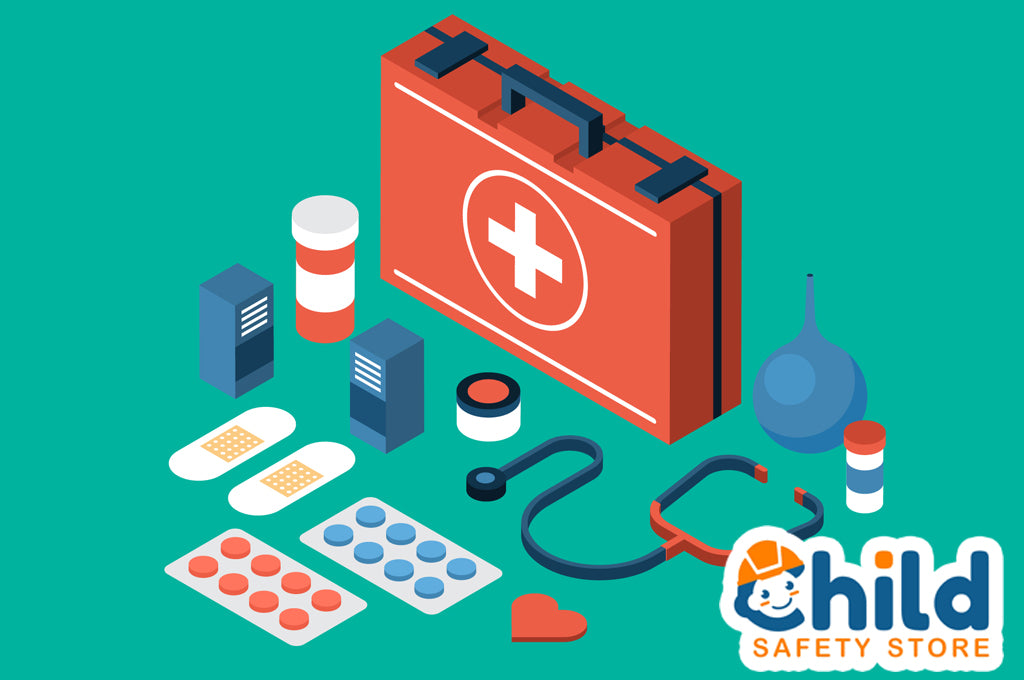
Build a First Aid Kit With All the Essentials
Let's talk first aid! We’ve discussed grooming essentials on this blog. We’ve also covered what to have on hand when your baby is sick. Now let’s talk about what you’ll need when your child gets hurt.
A curious child, or a baby who is just starting to crawl or walk, can certainly rack up their fair share of cuts, scrapes and bruises. Sometimes, these injuries need a little more attention than just a kiss from mommy or daddy. That’s when a well-made first aid kit comes in handy.
Why Should You Have a First Aid Kit?
Kids are going to get hurt from time to time. It’s unfortunate, but inevitable. If you’re prepared, you can prevent or treat some of these boo boos in a moment’s notice. Having an accessible first-aid kit packed with essential supplies will help you to deal with whatever comes your way.
To be as well prepared as possible, keep a first aid kit in your home, but also store one in your car. You may consider bringing one when your family goes on vacation as well – just remember to pack the kit in your checked luggage, as some items may not be allowed on a plane.
What Should I Keep In My Child’s First Aid Kit?
Between sports games, playground play-dates and general clumsiness, your toddler is bound to take some falls. And that’s okay! It’s all part of growing up. But what should you have on hand should they get hurt?
Let’s go through some essential first aid kit items so you can build up that shopping list!
An Assortment of Band Aids
Band-Aids are a standard go-to for healing boo boos. Not only do they come in all different sizes, they often feature your child’s favorite colors or television characters. First aid bandages are great for protecting your child’s minor cuts.
Gauze
If bandages aren’t enough to do the trick, gauze pads can be very helpful. Use them to address larger non-serious wounds. Since gauze pads need to be cut with scissors, and require tape to stay put, you should also consider including those items in your kit.
Anti-Itch Ointment
Scratching itchy skin can lead to infections. Hydrocortisone is an over-the-counter treatment that can minimize itching from insect bites, poison ivy and more.
Antibiotic Ointment
Antibiotic cream for pain relief can be used for minor cuts. It will prevent infection and help the cut to heal. This topical cream should be used after the skin is cleaned and before a bandage or gauze pad are in place.
Acetaminophen
Acetaminophen is a medicine that can be administered for pain, but you should only do so as directed. While most adults use this medicine in tablet or capsule form, the liquid version should be used for small children instead.
Other Helpful Items
Other helpful items for your first aid kit may include sunscreen and burn gel, a cold pack for minor aches, tweezers for splinters and ticks, and insect repellant to prevent bug bites.
Ask your physician for an extra prescription of fast-acting treatments like an inhaler for children with asthma symptoms or an EpiPen if they have a history of severe allergic reactions. Keep the extra supply in your first-aid kit.
Finally, something as simple as a book of stickers can be the perfect distraction when a child is hurt!
When Appropriate, Leave it to the Professionals
In the end, a first aid kit can be extremely helpful. However, it won’t be able to solve every issue. If you are unsure about how to best treat your child’s injury, or if their injury is more severe, take them to a professional. Broken bones and severe allergic reactions are the type of symptoms that warrant a trip to the emergency room. More often than not though, a first aid can be exactly the answer you need for caring for your child’s minor injuries.
